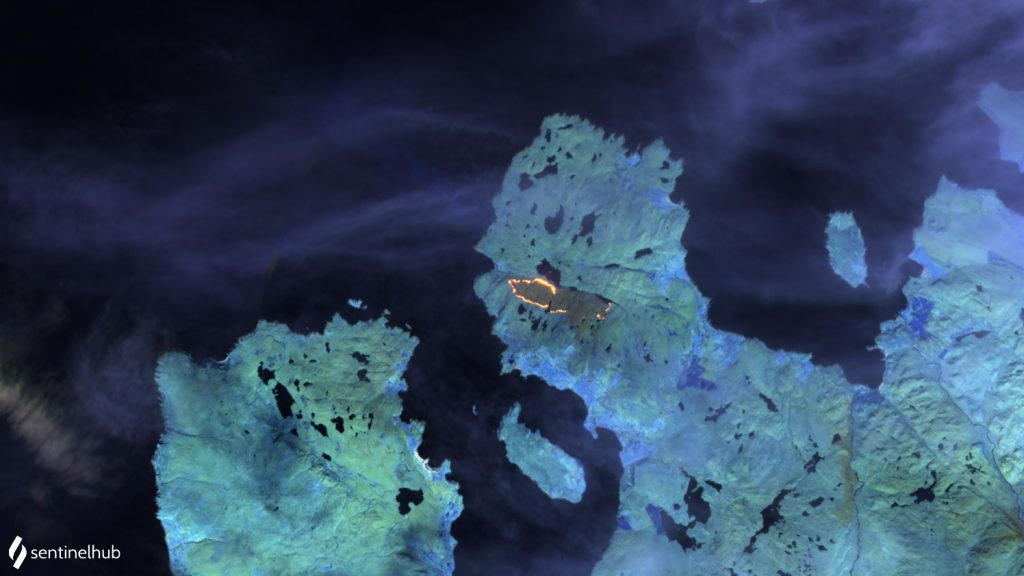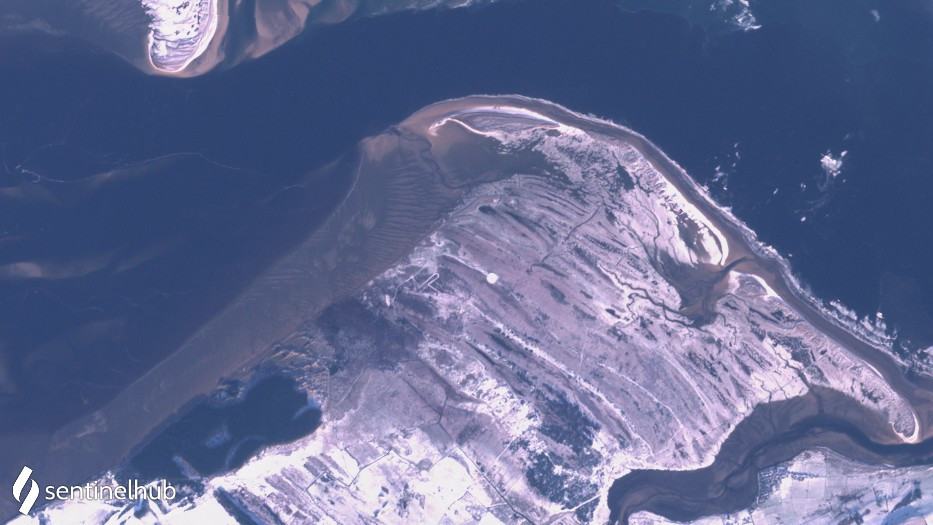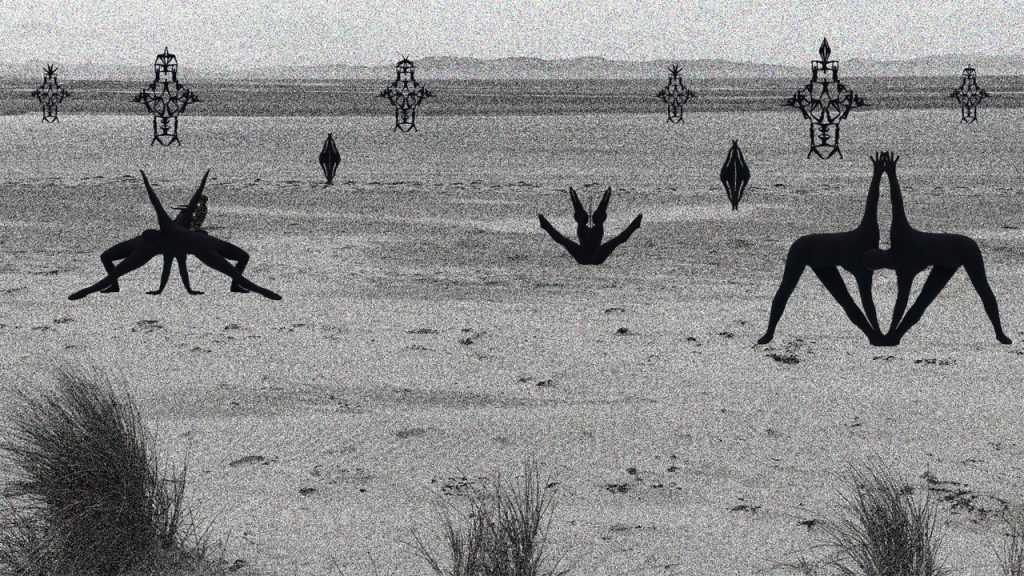Meta/Morph
JULIA MCGHEE, JOHN MCGEOCH, GEOFF ROBBINS
INTRODUCTION
This collaborative residency brought together dance artist Julia McGhee, multi-media artist John McGeoch and science technician Geoff Robbins. Together they investigated ways of representing distinct sets of satellite data that reflect environmental change or events in the far North of Scotland, where they are all based. Geoff focussed on satellite data available via Google Earth Engine, using this to create animated gif images. Julia interpreted environmental change through choreographed and improvised movement, filming herself at home, in her garden and on her local beach. John used the filmed movement to create digital animations, abstracting the form of the body to find new ways of presenting the chosen data sets. He also experimented in making a digital soundtrack by interpreting animated gifs as a musical score.
The final work, entitled ‘Meta/morph’, brings together explorations of three different sets of satellite data taken over the North of Scotland between 2016 and 2020:
- Atmospheric levels of Sulphur Dioxide
- Oil rigs in the Cromarty Firth
- Wildfires on the West and far North coasts
The team had hoped to interpret a further data set looking at intertidal change and coastal erosion, but the need for in depth analysis of the data meant this was not possible within the timeframe of the residency. However, with help from academics within the Geosciences and satellite data fields, exploration of this data set could happen within a future development phase of the work.



THE DATA
The data sets used in the project come from the European Space Agency’s Sentinel satellites, the data being processed via Google Earth engine. Initially Geoff started looking at a range of data sets including Sulphur dioxide from oil rigs in the North Sea and Nitrogen dioxide on the North Coast 500. It turned out that whilst cars and oil rigs do produce these emissions, they do not do so intensively enough to be detected on the available scales. Therefore, his focus shifted closer to home to looking for data where he knew exactly where and when detectable events had occurred. This led to the satellite imagery of oil rigs in the Cromarty Firth and wildfires across the North of Scotland in 2019.

Melvich wildfire 
Morrich More Sentinel-2 image, 2017-12-09

15 days of NO2 emissions in June 2019 
1 week of wildfire emissions

THE CREATIVE PROCESS
Working from home over two months during Covid-19 lockdown, presented the team with restrictions and practical challenges, but has also opened up new ways of working. From the outset, the team followed a process of online creative correspondence where they shared data, movement and digital animation via email and Vimeo, and met regularly via Zoom to share thoughts and ideas and to brainstorm problems.
Their main challenge – at times frustration – was trying to find a balance between scientific data and artistic interpretation. Therefore, within their final work, they decided to show the workings of their creative process: from environment to data to movement and digital animation.

Garden yoga 
Oil rigs

Beach rigs in After Effects 
Beach yoga 
Shiva in Resolume
COLLABORATION / THE TEAM

Julia is a freelance dance artist – performer, choreographer and teacher. She creates collaborative work in response to her local environment through live performance, dance film and participatory events.

John has been working in the arts since the early 80s, progressing through street theatre to touring theatre to multimedia. Currently mostly involved in animation and mapped projections he ran Arts in Motion, a multimedia performance and production company, for over 15 years.

Geoff is the school science lab technician at Tain Royal Academy. He has a background in astrophysics, web development and a broad range of scientific and technical subjects. He builds data bases and provides web development support.
With thanks to:
- Brendan McCarthy & Sam Healy, Ray Interactive
- Keiko Nomura, Space Intelligence
- Dr Murray Collins, Bayes Centre, The University of Edinburgh
- Prof Simon Mudd, School of Geosciences, The University of Edinburgh
- Dr Marta Payo Payo, National Oceanography Centre
- Prof Colin Moffat, Chief Scientific Advisor Marine, Scottish Government
- Prof David M. Paterson, Executive Director, The Marine Alliance for Science and Technology for Scotland